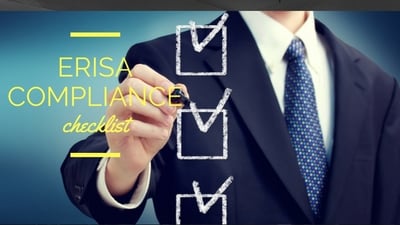
For the fiscal year ending September 2013, the Department of Labor (DOL) closed 3,677 investigations on defined contribution retirement plans. Of that amount, 775 (21%) were triggered by participant complaints .1 Why were there complaints by participants against their employer sponsored retirement plan? The cause is primarily due to a lack of oversight by the employer and understanding of what roles and responsibilities fall upon various staff members and hired vendors. How can you avoid an unnecessary DOL audit and make sure your 401(k) or 403(b) retirement plan is in compliance with DOL and IRS standards? A good start is by completing an ERISA Compliance Checklist. This exercise will allow you to identify weaknesses in your process and help to answer the following 3 Questions:
1) Does your organization have a formal process by which retirement plan decisions are made?
An ERISA compliant decision making process includes formal decision making authority by fiduciaries from the highest powers of the organization (Board of Directors, Board of Trustees, Senior Executives, etc). The "formal" part of the process comes from a documented and agreed upon set of rules and responsibilities where parties are assigned various tasks. For example, is there a delegation from a Board of Directors to the Retirement Plan Committee that spells out what decisions the Committee can make and which ones they can't? Who in your organization is a Fiduciary on behalf of the plan? Who is not?
Download our free ERISA Compliance Fiduciary Checklist here to learn if your plan is in compliance with Department of Labor Standards.
2) Does your organization regularly review the plan document, plan investments and vendor arrangements to ensure they're ERISA compliant?
Having a regular monitoring process in place that is documented is a key component of maintaining ERISA compliance. There may be things about your retirement plan that are working well, and perhaps items that need improvement. Having a regular review allows for continuous improvement and monitoring to benefit plan participants. Also, as the retirement plan industry evolves and new plan features such as ROTH, automatic enrollment and automatic contribution escalation should continually be considered.

3) Does what your plan document say and what your organization actually does align?
This is a large item where many plans fall short in the eyes of the Department of Labor. A few examples we've seen from plans include:
-Using ineligible compensation to calculate participant deferrals.
-Inadvertently including or excluding employees from employer contributions.
-Inadvertently excluding eligible employees from participating.
Make sense? Now, there are other questions that are vital to ensuring ERISA compliance and understanding your role and responsibility as a Fiduciary for your retirement plan. We hope this blog post provides you a solid framework you can follow if you're just getting started or if you're concerned about what you may be missing. If you want to read more on this topic, feel free to download our free Fiduciary Responsibility Guide eBook from the button below.

